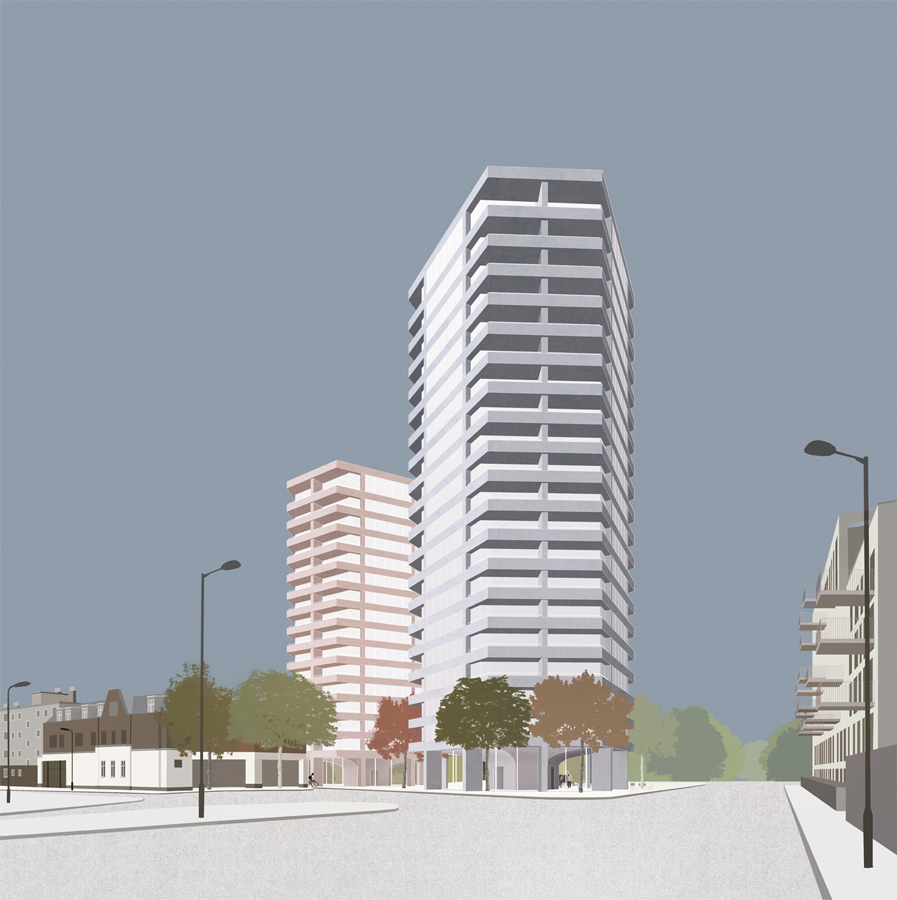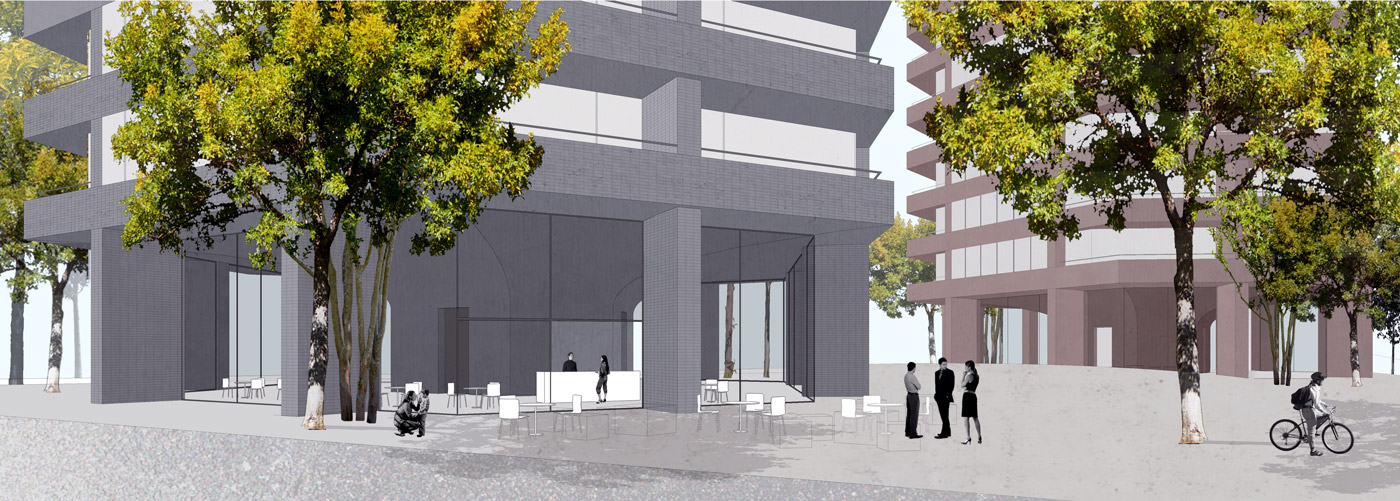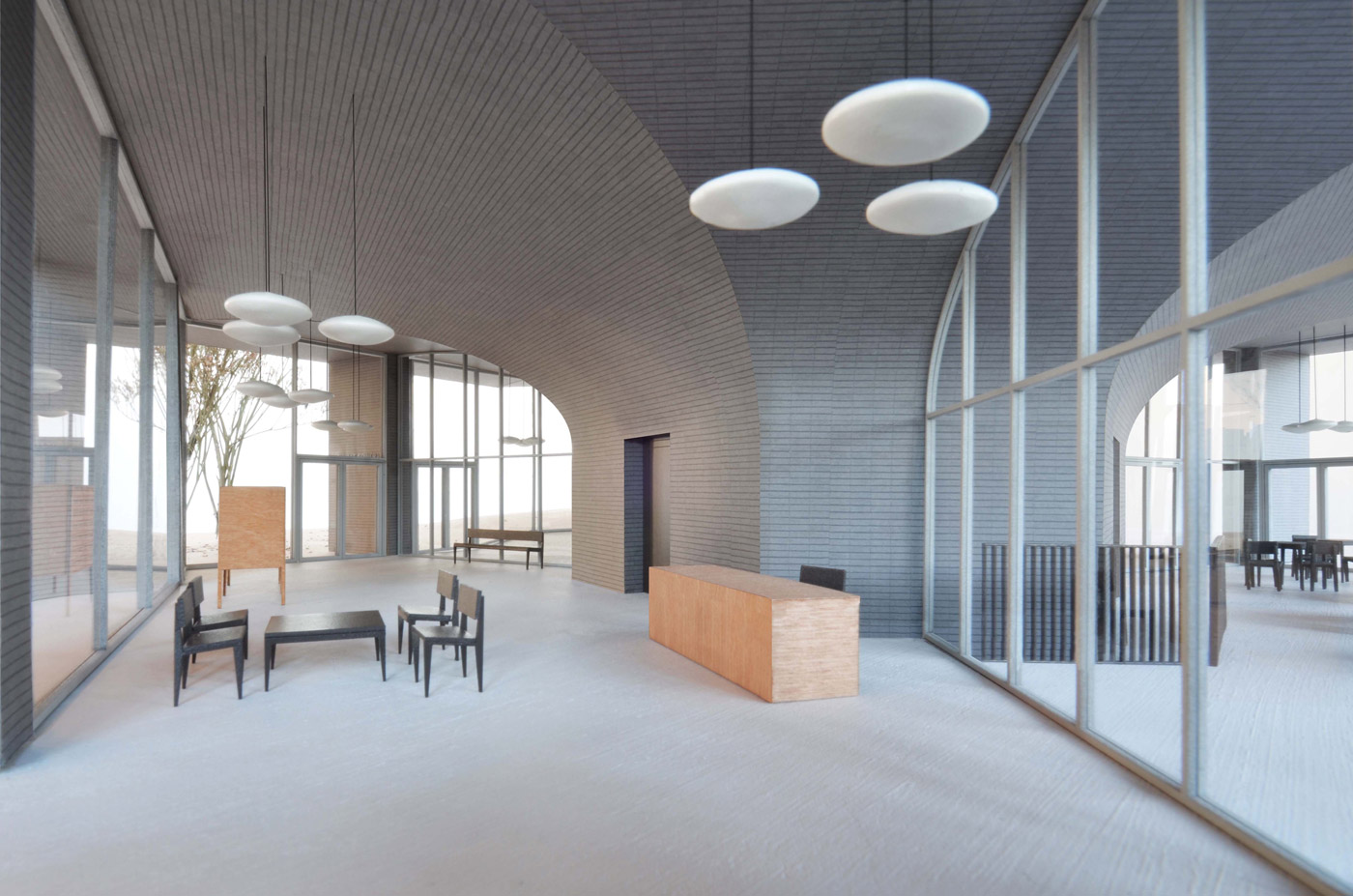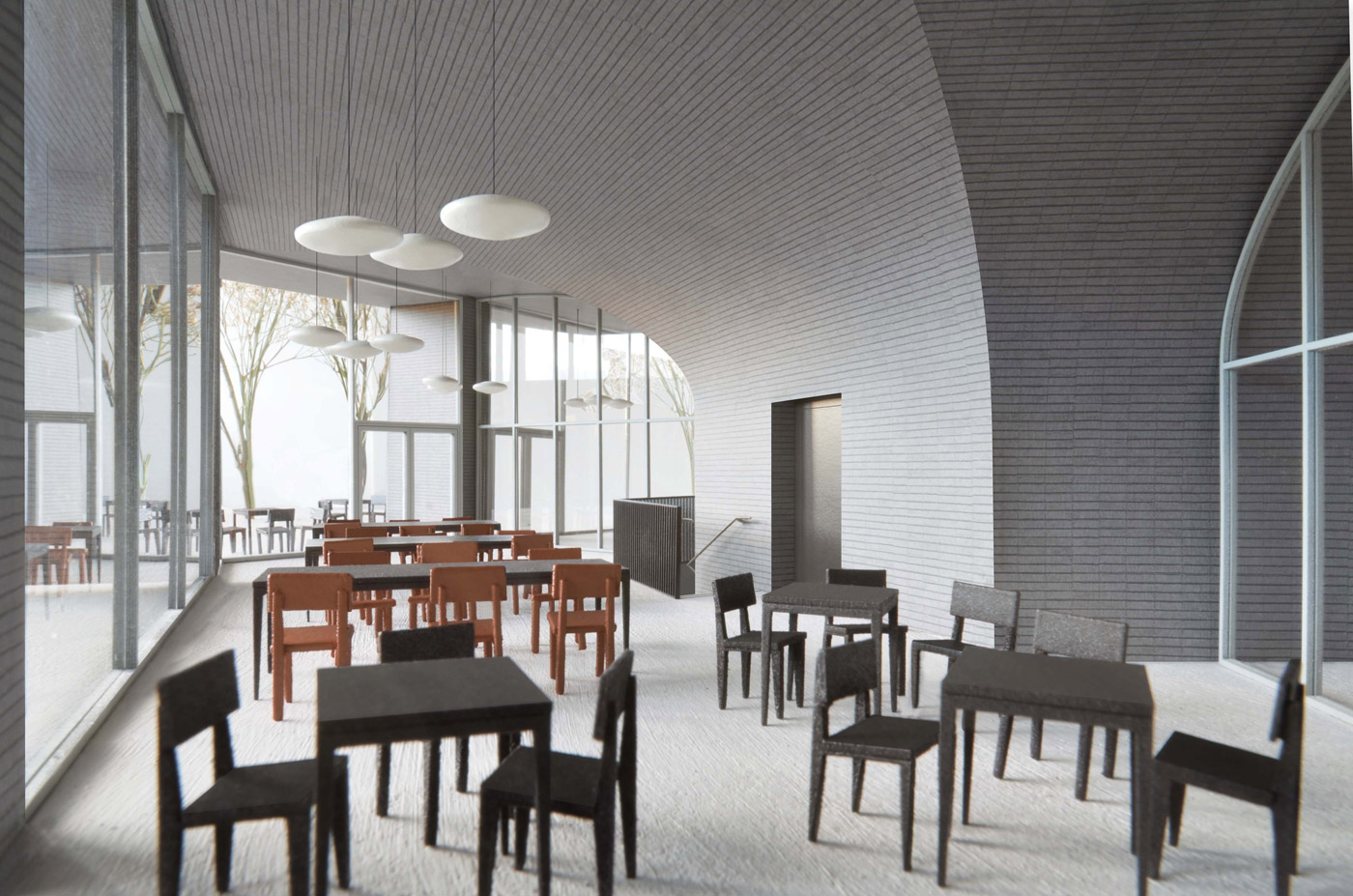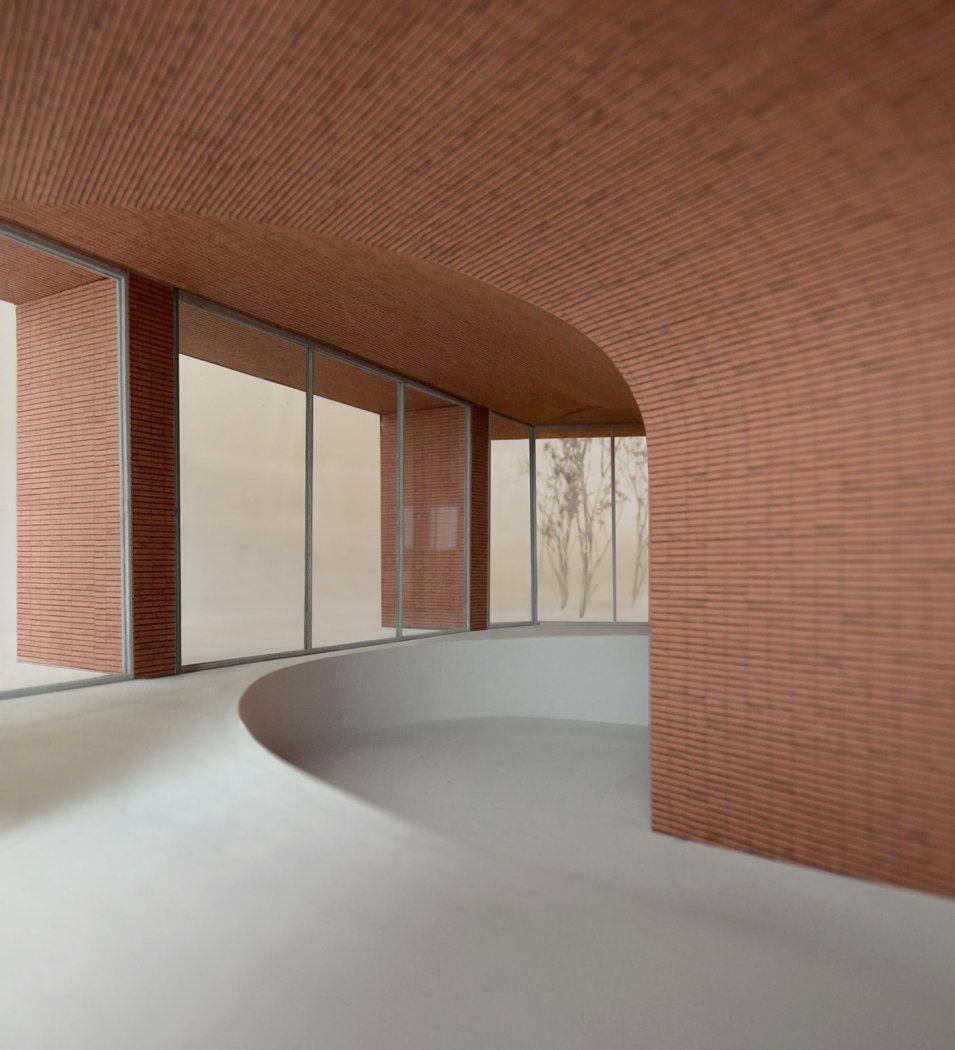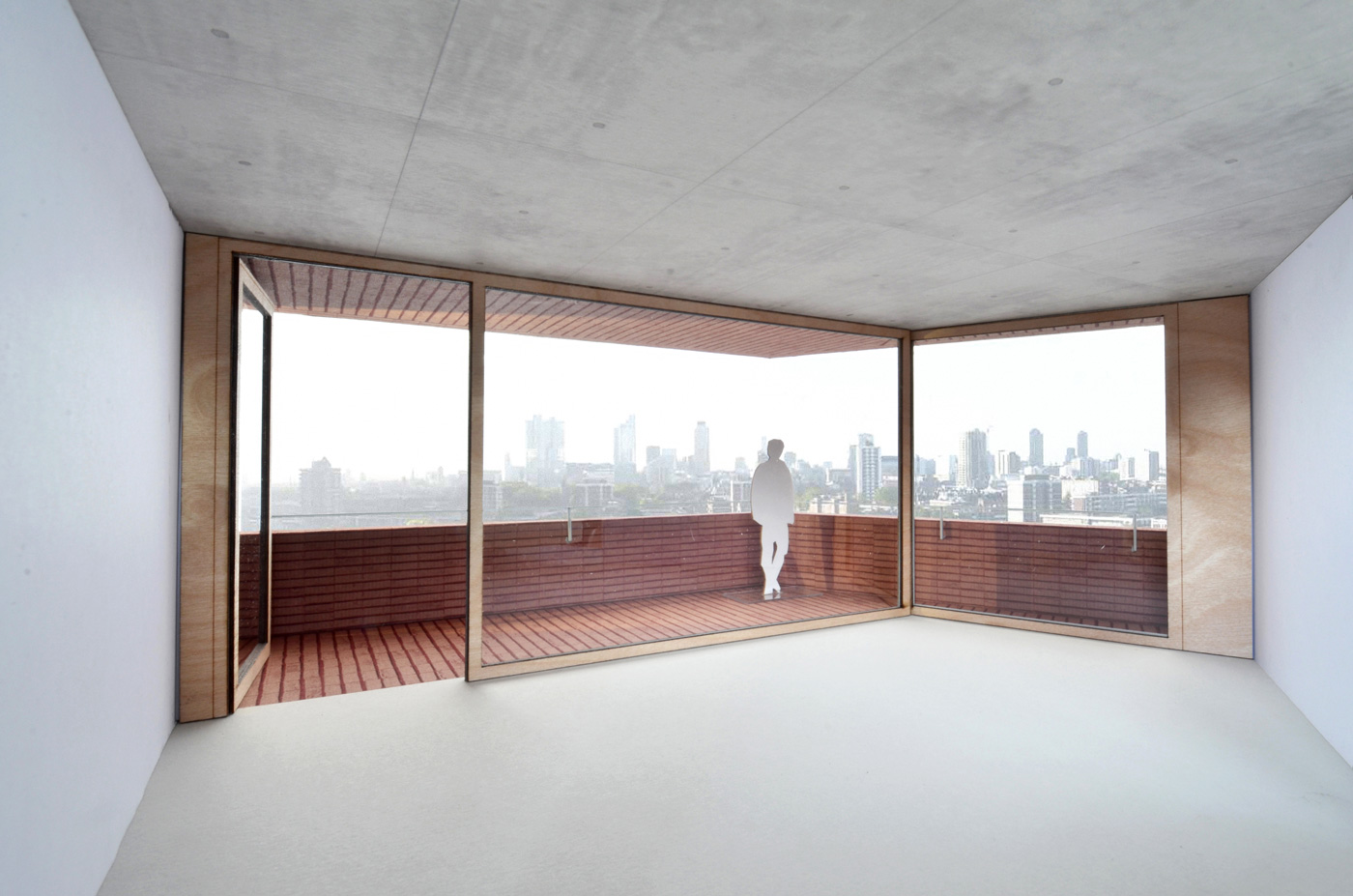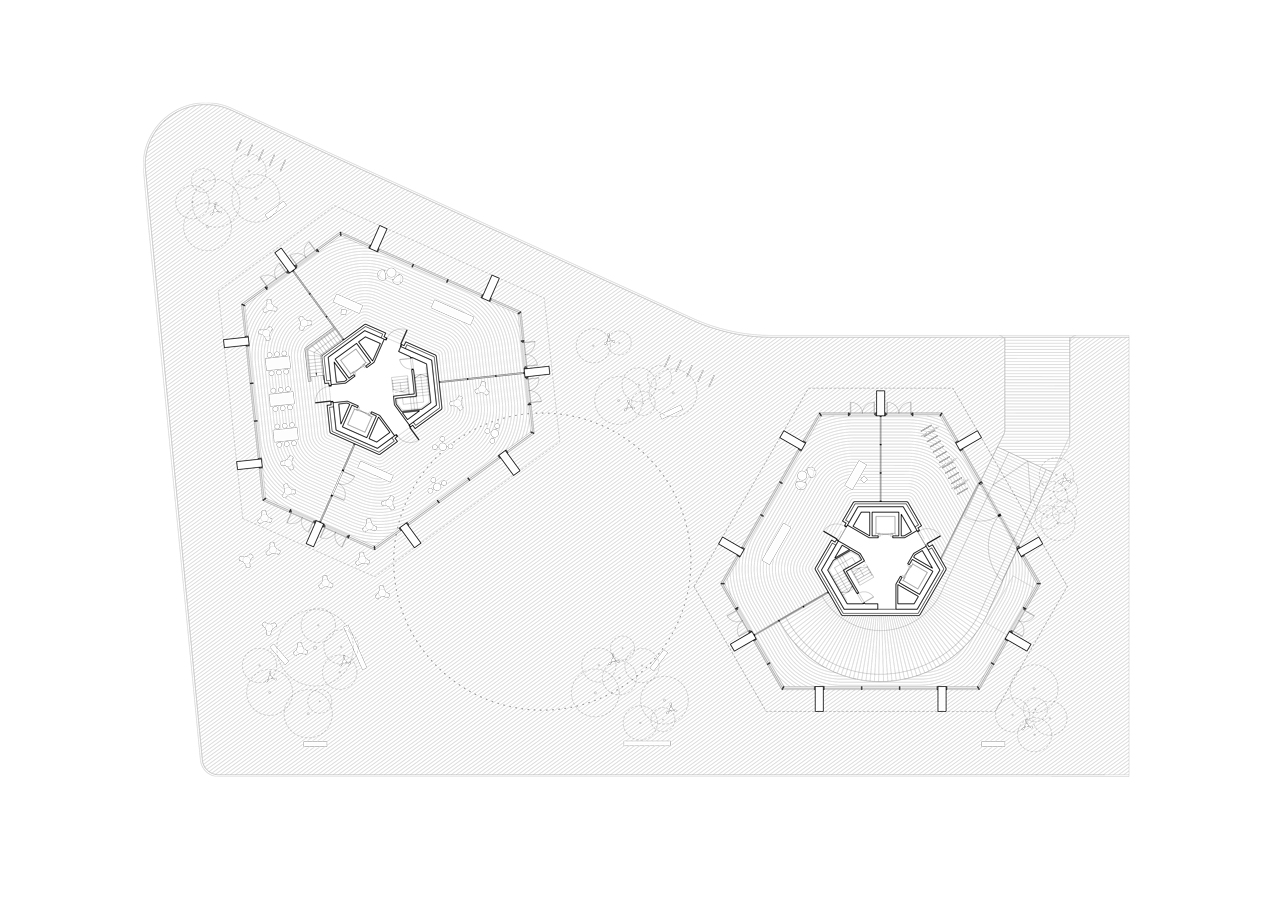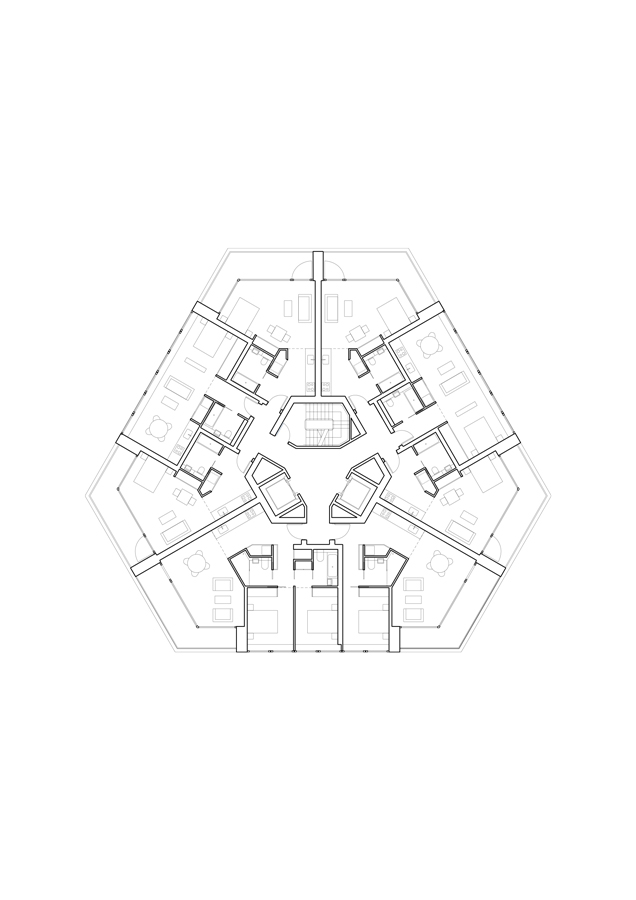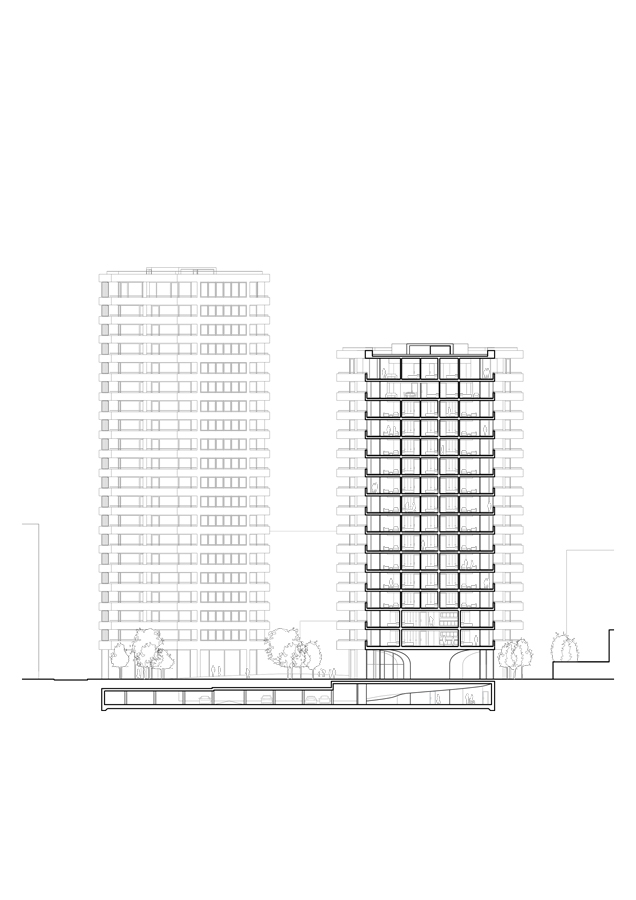Colville Towers is a proposal by David Chipperfield for The London Borough of Wandsworth in 2012. It is located in London United Kingdom in an urban setting. Its scale is large with a surface of 16.980 sqm. Key materials are concrete and ceramic.
The site is located in the south west corner of the 4.8 hectare Colville Estate, a housing development built in the 1950s in Hackney, east London. Colville Towers will replace Harwood Court, the tallest building on the existing site, with Regent’s Canal to its north and Shoreditch Park to its south. The project is part of the Hackney Council Estate Regeneration Team’s programme of redevelopment across the borough.
The Council aims to build around 2500 new homes over the next 10 years. Karakusevic Carson Architects were originally commissioned to work with the Council and the Colville Estate Tenants and Residents Association (CETRA) to develop a comprehensive masterplan, which was adopted in 2011. The following year, David Chipperfield Architects in collaboration with Karakusevic Carson Architects won a competition to design two residential towers intended for private sale to help fund the redevelopment of the estate as a whole.
Two towers, 16 and 20 storeys respectively, sit on either side of a gentle hill surrounded by informal clusters of trees framing views to the park and the surrounding landscape. Varying in height and orientation, each tower has a distinct identity further reinforced by a different tonality.
The hexagonal form optimises views, light, and ventilation, offering each of the 198 apartments a corner living room and a balcony. The ground floor remains relatively permeable with a café located in one of the towers and a car park entry in the other. The residential floors have a concentric arrangement with living spaces and bedrooms in the outer zone, taking advantage of windows and balconies. The ancillary spaces (kitchens and bathrooms) are positioned around the central cores, in which the lifts and entrances are found.
Each typical floor plate consists of six apartments, and the structural frame facilitates column-free corners and unobstructed views. Balconies are formed by extending the volume on alternate façades and connect to the living spaces, while all bedrooms are arranged, according to the size of the apartments, along the balcony-free façades.
The structural frame of the building is made of in-situ concrete and the floor plates have been provided with upstands, reducing the depth of the slabs thus creating generous floor-to-ceiling heights (2750mm). The towers are clad with handmade bricks set in a stack bond, alluding to their non-loadbearing character. Each tower uses a different colour brick with a colour-matched mortar; a blue/grey tonality for the western tower, and a red tonality for the eastern one.
As the site forms an important link between Shoreditch Park and the Colville neighbourhood, a single surface material underlines its permeability, devoid of fixed paths or walkways. This cobbled ‘carpet’ also covers the artificial hill between both towers. It is interspersed with loose clusters of trees and enters the towers creating a seamless transition between exterior and interior. The ground floor interiors, enclosed by 5 metre vaults with minimal glazing, are singular, flexible and light-filled spaces.
These are effectively vaulted soffits between the core and the first floor slabs. In materiality, the exterior façades of the towers appear as a continuum of the vaults and the nine supporting columns at the base of the building.
